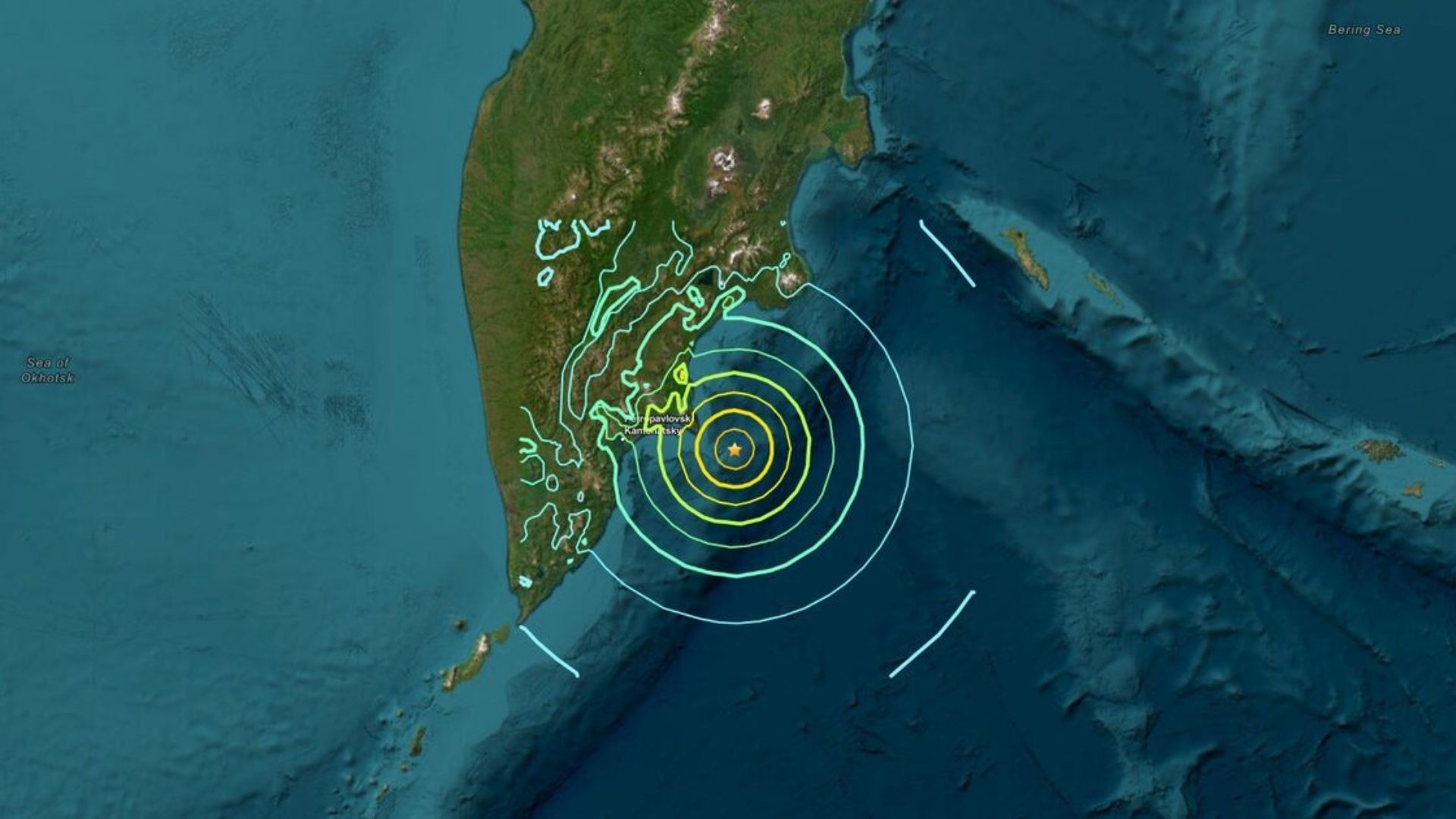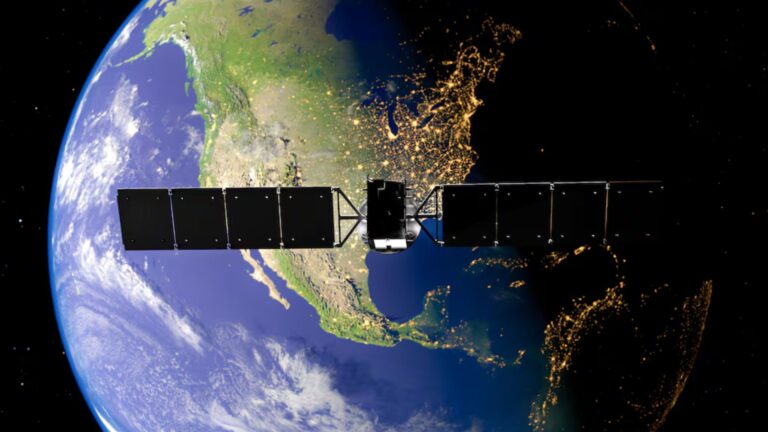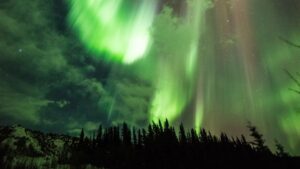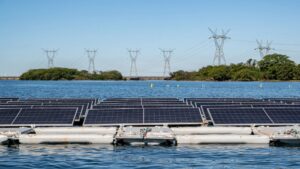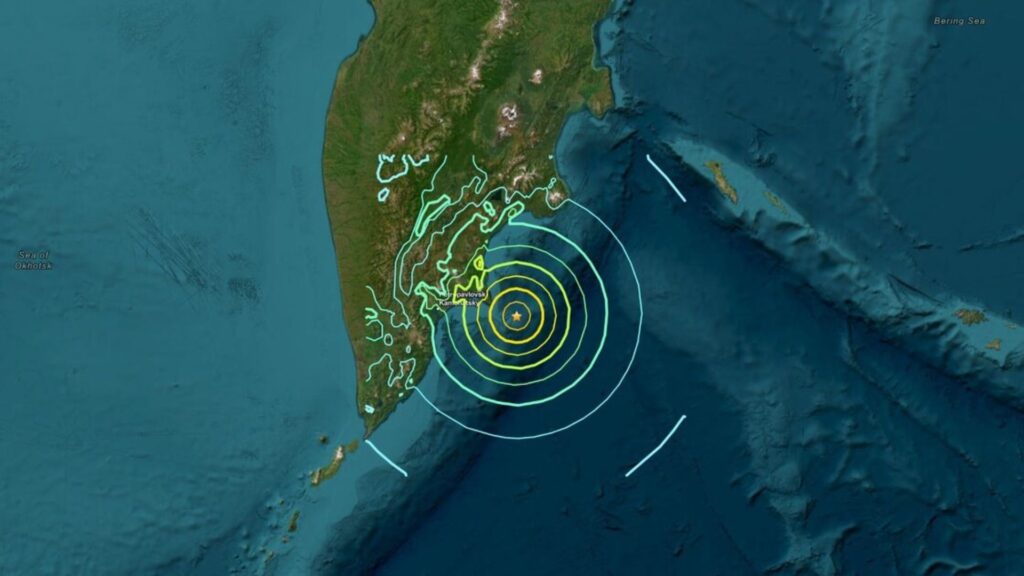
A magnitude 7.4 earthquake shook the eastern coast of Russia’s Kamchatka Peninsula on Saturday at 11:30 p.m. Brasília time, with the epicenter located 111 kilometers east of Petropavlovsk-Kamchatsky at a depth of 39.5 kilometers. The United States Geological Survey initially reported the tremor as magnitude 7.5 before revising it to 7.4, reflecting standard post-event adjustments.
Kamchatka lies along the Pacific Ring of Fire, where the Pacific tectonic plate collides with the North American plate at roughly 80 millimeters per year, making it one of the world’s most seismically active regions. This event follows the catastrophic magnitude 8.8 earthquake in July 2025, which remains one of the strongest ever recorded and generated tsunamis up to four meters high across the Pacific.
Brief Tsunami Warning Issued and Canceled
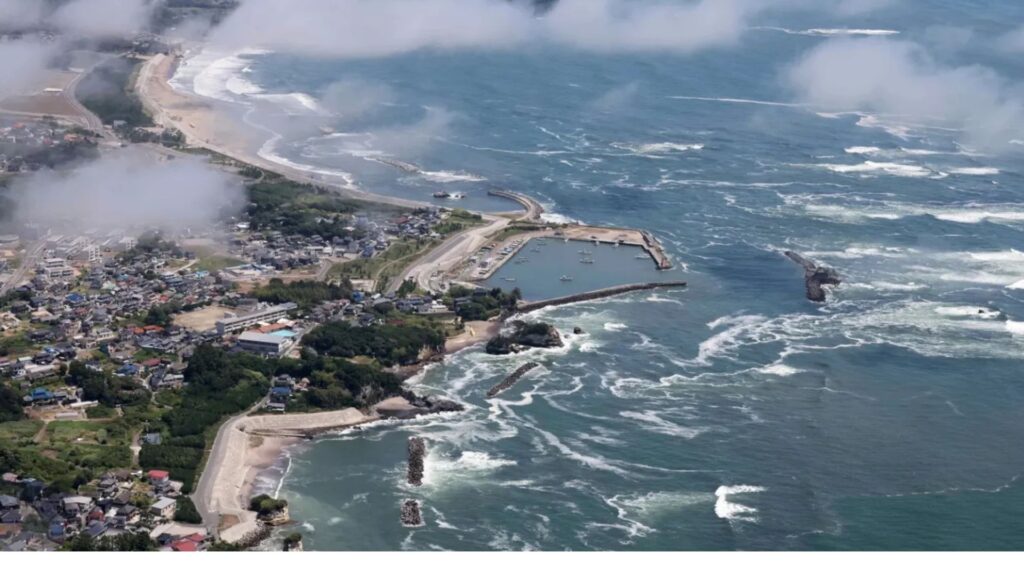
The Pacific Tsunami Warning Center (PTWC) issued an urgent alert warning of “dangerous” waves up to one meter high along coasts within 300 kilometers of the epicenter. Coastal communities were placed on high alert as authorities prepared for potential inundation.
Approximately one hour after the quake, PTWC rescinded the warning, confirming that “the tsunami threat has passed.” No significant wave activity was detected, and neighboring Japan—which sometimes receives tsunami alerts from Kamchatka events—reported only minor sea-level fluctuations, prompting no formal advisory from the Japan Meteorological Agency.
Local Emergency Response
Kamchatka’s governor, Vladimir Solodov, activated all emergency services to their highest readiness level immediately following the quake. Teams of inspectors were dispatched to assess structural integrity at critical infrastructure sites, including hospitals, schools, and bridges.
Despite strong aftershocks reported in the hours afterward, there have been no confirmed casualties or major damage to date. Local officials continue monitoring seismic activity and stand ready to support affected communities should further issues arise.
Regional Seismic Context
This quake represents yet another significant aftershock in a region still recovering from the July 2025 magnitude 8.8 event, which forced mass evacuations from Hawaii to Japan and underscored the trans-Pacific reach of Kamchatka-generated tsunamis. The region’s cascading seismic activity highlights the ongoing risk posed by its location on the Ring of Fire.
Seismologists emphasize that such powerful earthquakes, common in this tectonic setting, can produce complex patterns of aftershocks and secondary hazards, reinforcing the need for robust preparedness measures across all Pacific coastal nations.




